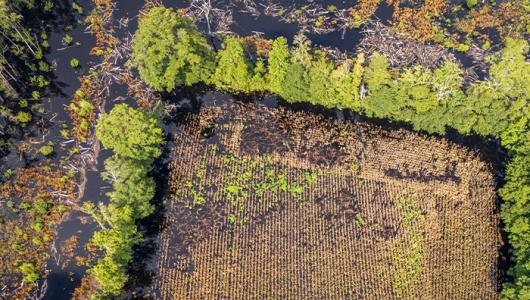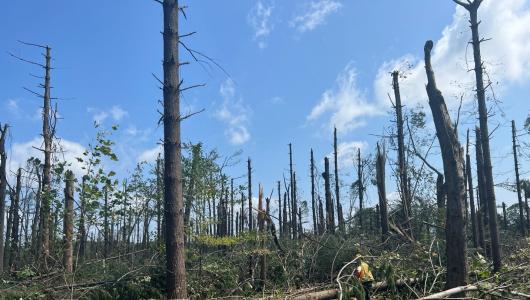This Friday, we visit the Duck Valley Indian Reservation, established in 1877 and spanning nearly 290,000 acres between southern Idaho and northern Nevada. Farming and ranching are mainstays for members of the Shoshone-Paiute Tribes.
A Solution Through Partnerships
The reservation had issues with its water supply. Out of the 12,777 acres of irrigable land serviced by canals, approximately one-third was not irrigated due to poor drainage, or undeveloped crop lands. The ditches were cleaned sporadically, and structures repaired if they could be, but the system was in disrepair for many years.
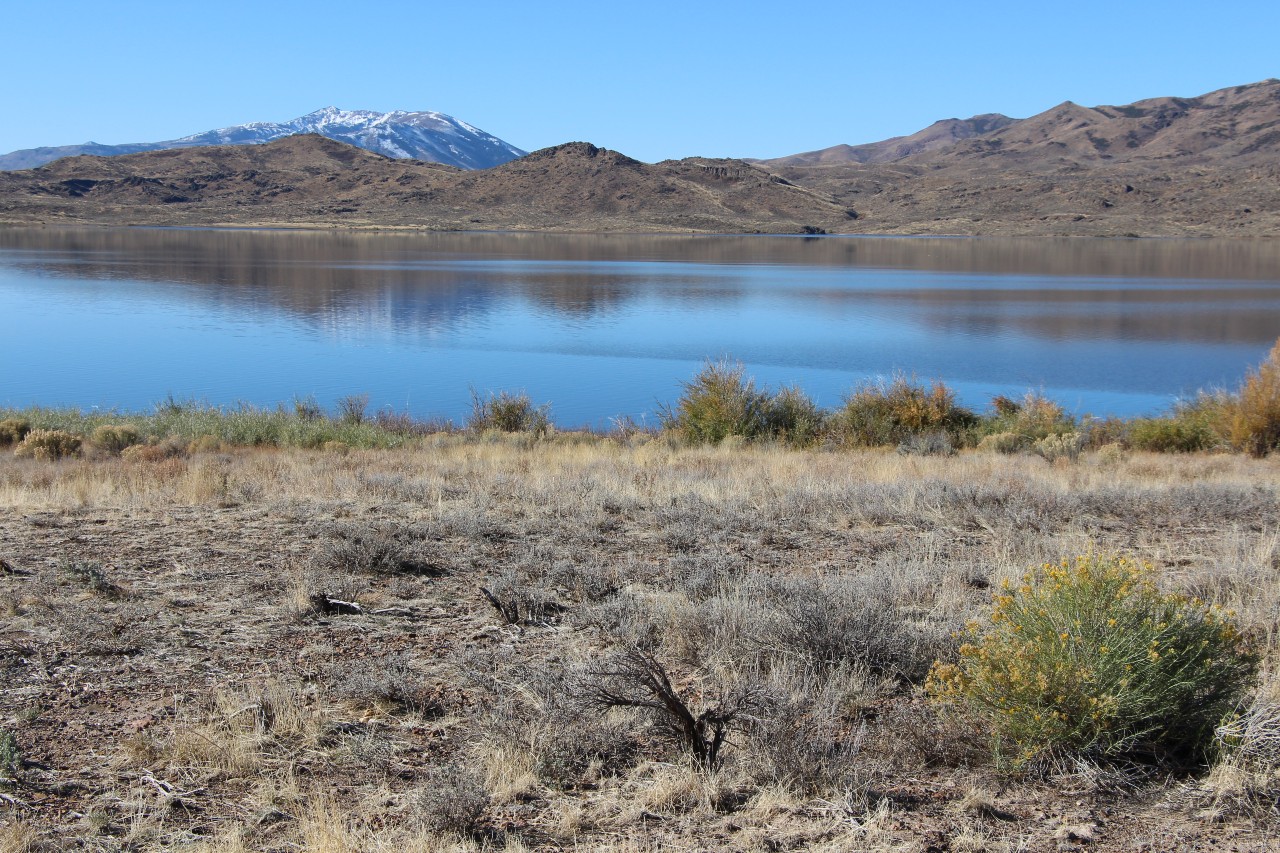
Duck Valley Indian Reservation receives its irrigation water from Wildhorse Reservoir.
Then, from 2011 to 2015, the area was in severe drought. The Wildhorse Reservoir, which supplies the reservation’s water and recharges through spring runoff, was drawn down each year for irrigation despite the drought.
The disrepair of the ditches and the drought influenced the decision to create a more efficient irrigation system on the reservation to improve production.
In 2014, the Duck Valley Shoshone-Paiute Tribes applied for a contract through the Regional Conservation Partnership Program, administered by USDA’s Natural Resources Conservation Service. The program leverages federal conservation funds along with private contributions to achieve large-scale natural resource conservation.
The Duck Valley Shoshone-Paiute Tribes were the first Native American tribes in the nation to receive an RCPP contract. Their partners included the Duck Valley Conservation District, Wildlife and Parks, the Business Council, and the Water Board.
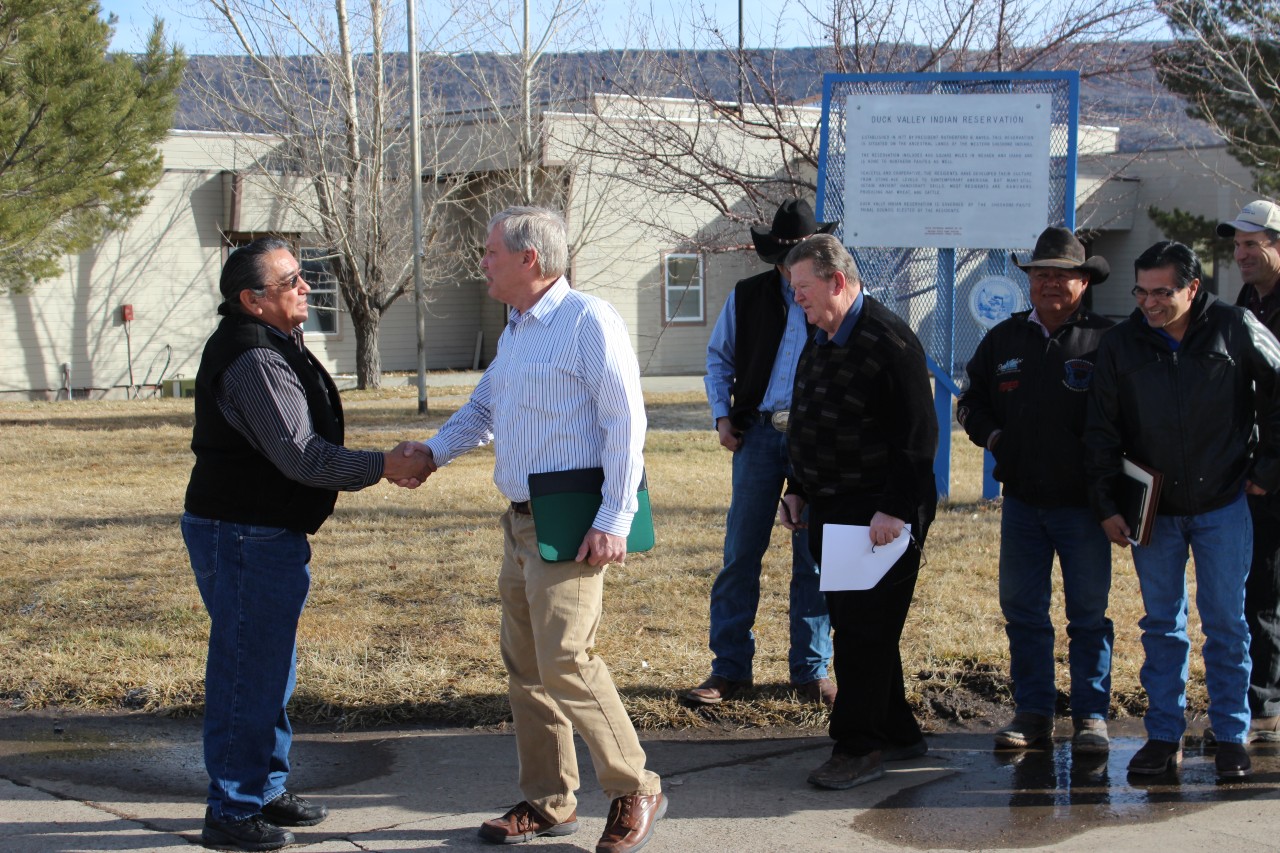
The Duck Valley Shoshone-Paiute Tribes met with NRCS in January 2015 when they were awarded the RCPP contract.
Eliminating Obstacles
One of the challenges to creating a more efficient irrigation system was to find water sources for the cattle while keeping them out of the canals and ditches, further degrading the infrastructure. The irrigation system must be drained in the winter to prevent damage from freezing temperatures, but this leaves no water for the cattle. Similarly, if the open ditches were changed to pipelines as part of the RCPP project, the cattle wouldn’t have water in the summer.
To tackle these challenges, the tribes installed 25 nose pumps to provide frost-free winter water.
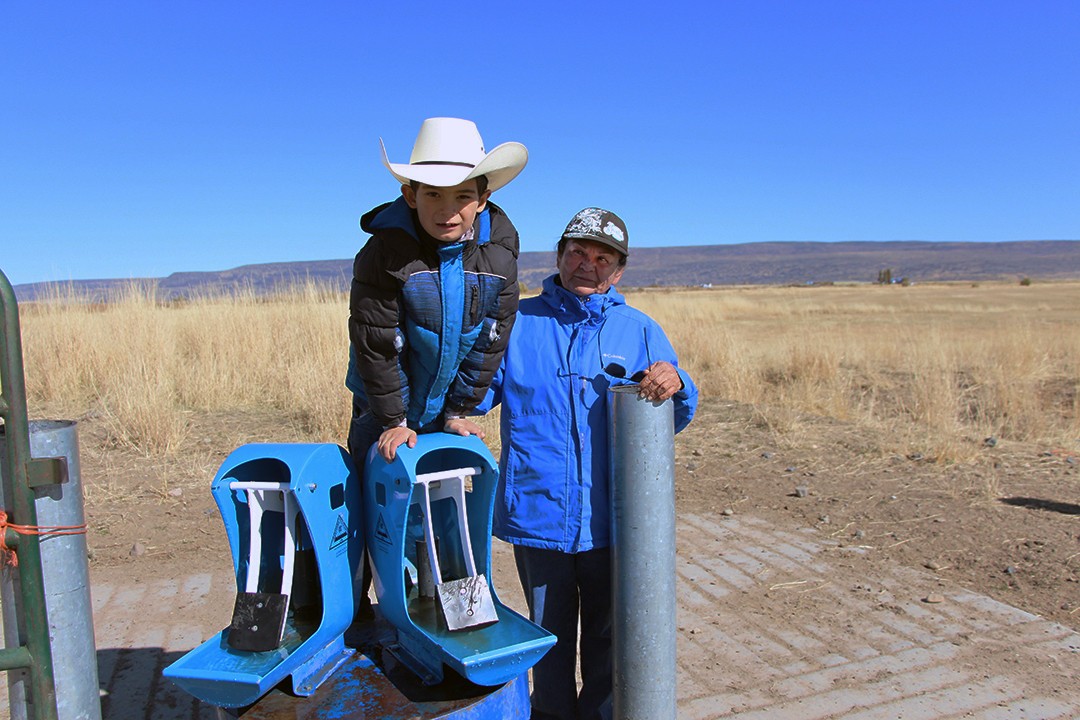
Cattle rancher Dolly Blossom-Paiva, above with her grandson, is happy with her new nose pumps that always ensure clean water for her cattle.
“It gets pretty tough in the wintertime over here,” said producer Dolly Blossom-Paiva. “You need a four-wheel drive (vehicle) just to get in here, so this water is good to have here because it doesn’t freeze.”
They are also installing solar livestock watering systems in areas where the water table is greater than 25 feet deep, which include water wells with solar pumps, troughs, and pipelines.
Working on Water
“The goal of the RCPP project is to take the current 12,600 acres that's under production and increase that to over 21,000 acres,” said Devin Heaps, water resources director for the tribes. “Before this new pipeline, the water seepage out of the canal from old, rusty, deteriorated pipes was producing a lot of willow growth.”
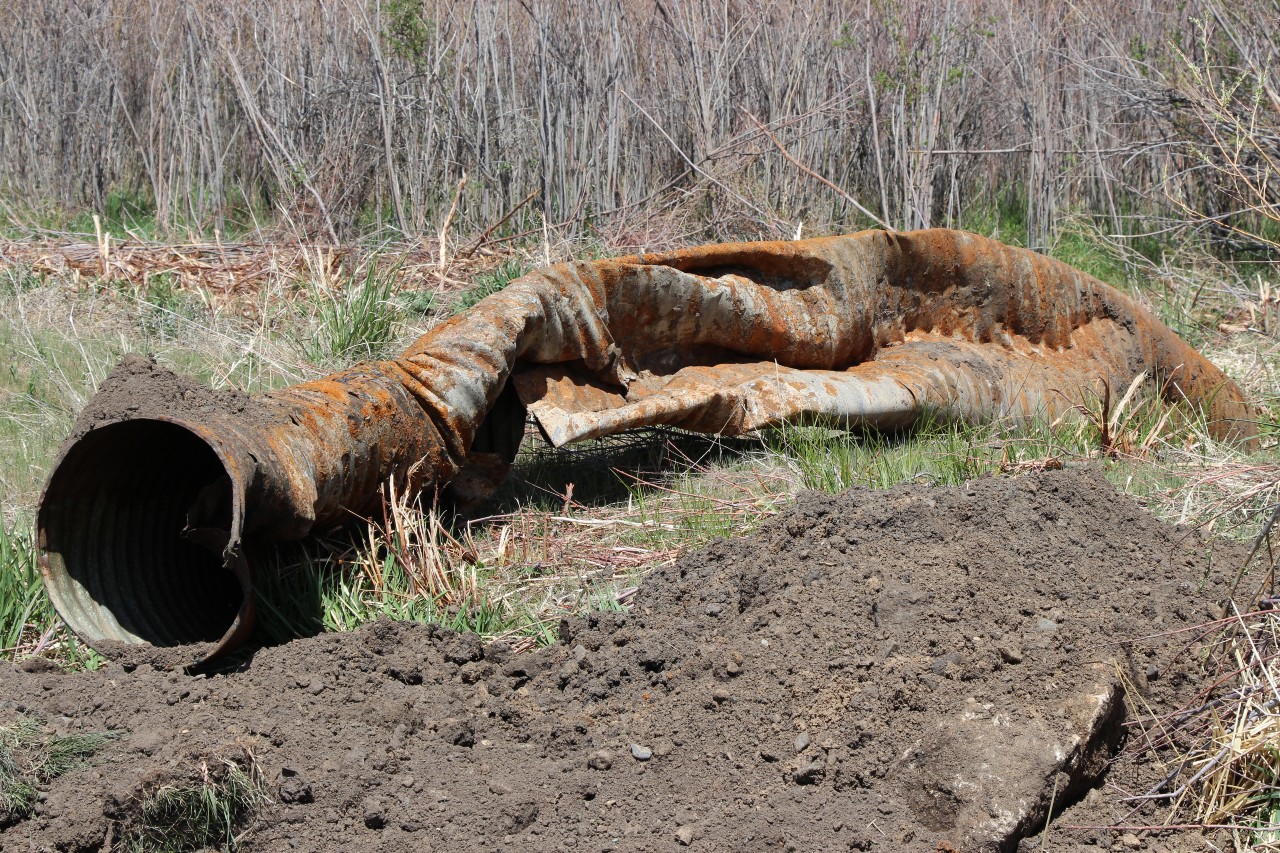
Before the new pipeline, the water seepage out of the canal from old rusty, deteriorated pipes produced a lot of willow growth.
The rust and deterioration caused water loss and reduced pressure, interfering with flow into the main canal while also promoting growth of willows which have since been cut down to create better water flow and conservation.
“Historically it's been very difficult to measure water throughout the reservation,” said Devin. “The addition of the submerged orifices is irrigation best practices going forward into the future.”
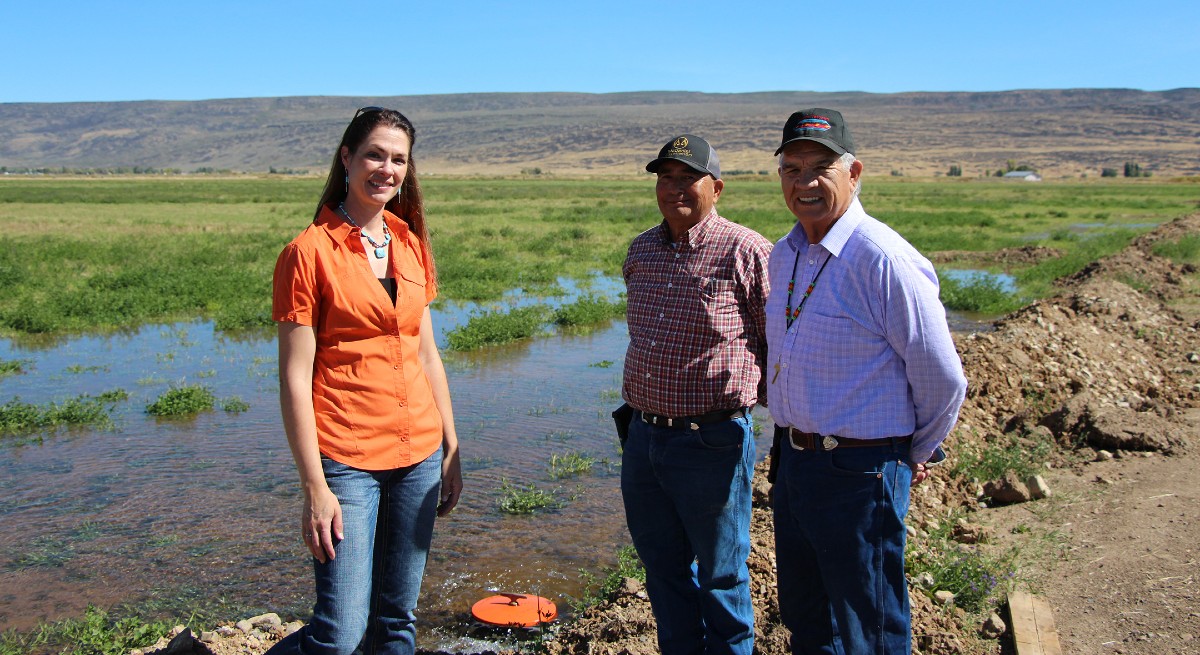
NRCS District Conservationist Jaime Jasmine, Bill Beck, construction coordinator for the Duck Valley Irrigation Project, and Tribal Chairman Ted Howard stand at a newly installed portion of the irrigation system on a producer’s property in September of 2019.
“The people who are being serviced by the pipeline really enjoy the improvement. They don't need to worry about cleaning ditches,” said Tribal Chairman Ted Howard. “We really appreciate the help from the NRCS and RCPP funding.”
More Information
Each Friday, visit local farms, ranches, forests, and resource areas through our #FridaysOnTheFarm stories. Meet farmers, producers, and landowners who are working to improve their operations with USDA programs.
USDA offers a variety of risk management, disaster assistance, loan, and conservation programs to help agricultural producers in the United States weather ups and downs in the market and recover from natural disasters as well as invest in improvements to their operations. Learn about additional programs.
For more information about USDA programs and services, contact your local USDA service center.
Heather Emmons is the public affairs specialist for NRCS in Nevada.

